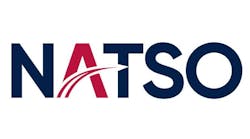Later this year, Cummins Westport (CWI) will install a 9L ISL G natural gas engine in a Southern California heavy-duty truck. What is a seemingly routine installation—one that takes place in approximately two out of every three heavy-duty trucks ordered in the United States today—could change the future of heavy-duty commercial transportation forever.
This engine will not be an ordinary natural gas engine. It will have nitrogen oxide (NOx) emissions of 0.02 g/bhp-hr., or below, making it more than 90% cleaner than the most stringent U.S. EPA heavy-duty on-road emissions standards on the books today. With such incredibly low emissions, this engine will be considered “near-zero NOx.” In fact, it will have a similar air emissions profile to that of a heavy-duty battery electric truck plugged into the California electrical grid.
On Sept. 10, the medium-heavy-duty version of this landmark CWI ISL G engine was certified for sale by the California Air Resources Board (ARB). Fleet marketing by CWI is now beginning, with full commercial sales planned in 2016. Following the 9L ISL G engine platform, CWI will bring to market similar near-zero emissions versions of two other dedicated natural gas engines: the ISB6.7 G and the popular ISX12 G. All three engine platforms are expected to be commercially available with near-zero NOx emissions by 2018, if not sooner.
While this new technology is groundbreaking in efforts towards a near-zero emissions future, it is only half of the story. Currently in California, nearly 50% of the NGV transportation fuel comes from renewable sources such as landfills, dairies, and other waste streams.
According to the latest ARB information, using traditional natural gas (i.e., “fossil” gas) in place of diesel fuel for heavy-duty trucks will reduce lifecycle GHG emissions by approximately 15%. This provides very important benefits under the state’s Low Carbon Fuel Standard (LCFS) program (part of AB 32, California’s Global Warming Solutions Act), which is aimed at reducing the carbon intensity of California transportation fuels by 10% by 2020 and 80% by 2050. However, when renewable natural gas (RNG) is used in these very same engines, the lifecycle GHG emissions benefits increase to 80% or more—in some cases even greater than a 100% reduction in GHG emissions—thereby exceeding the 2050 goals of the LCFS Program.
This technology-fuel combination can play an extremely important role in the achievement of nearly every major California public policy having to do with transportation, air quality and energy. Equally important, increased market penetration of heavy-duty natural gas truck technologies and RNG can provide very compelling economic benefits.
The alternative fuels industry has always agreed that there is no silver bullet when it comes to fuels and advanced transportation technologies. However, it is clear that the landmark commercial introduction of near-zero NOx emissions engines fueled by very low-GHG RNG is an achievement for air quality and petroleum displacement goals that is as close to a “holy grail” solution as has ever been seen in the heavy-duty refuse and Class 7 and 8 truck sectors.
Erik Neandross is CEO of Gladstein, Neandross & Associates (GNA), the clean transportation and energy consulting firm that organizes the Alternative Clean Transportation (ACT) Expo. GNA is working on a comprehensive review of these game changing developments with advanced heavy-duty natural gas engines and RNG. Learn more at www.gladstein.org and www.actexpo.com.


